Best practices – Part 1: Thermal insulation
Electric underfloor heating, one of the best heating systems, is installed just below the floor pavement. It doesn’t require any type of boiler or central heating system and therefore presents many advantages versus other heating system: Low initial investment, high flexibility, independent installation for each room, no maintenance and long shelf life.
The installation process is easy but needs to follow strictly our recommendations to ensure an optimum comfort, energy savings and long durability.
In this first part of the best practices, we will review the previous step to the installation of the heating mat, the floor thermal insulation.
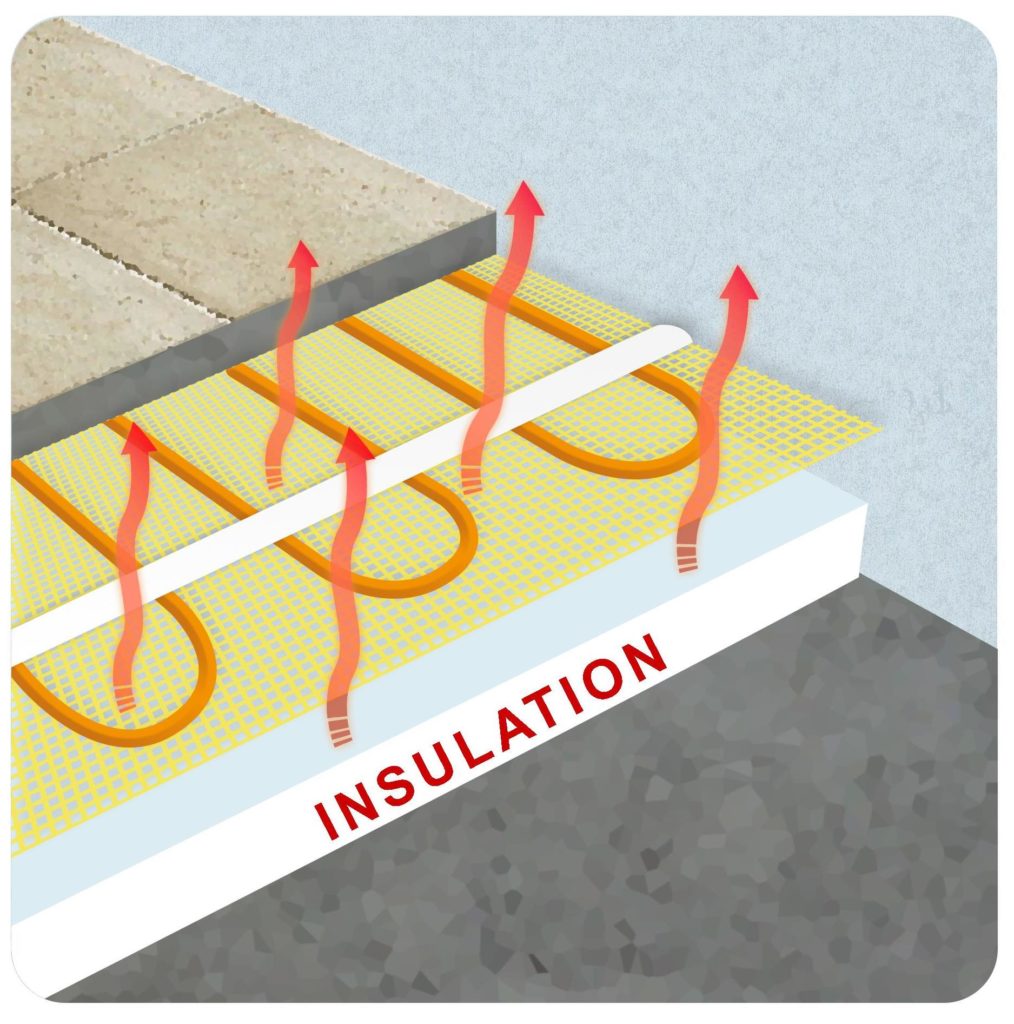
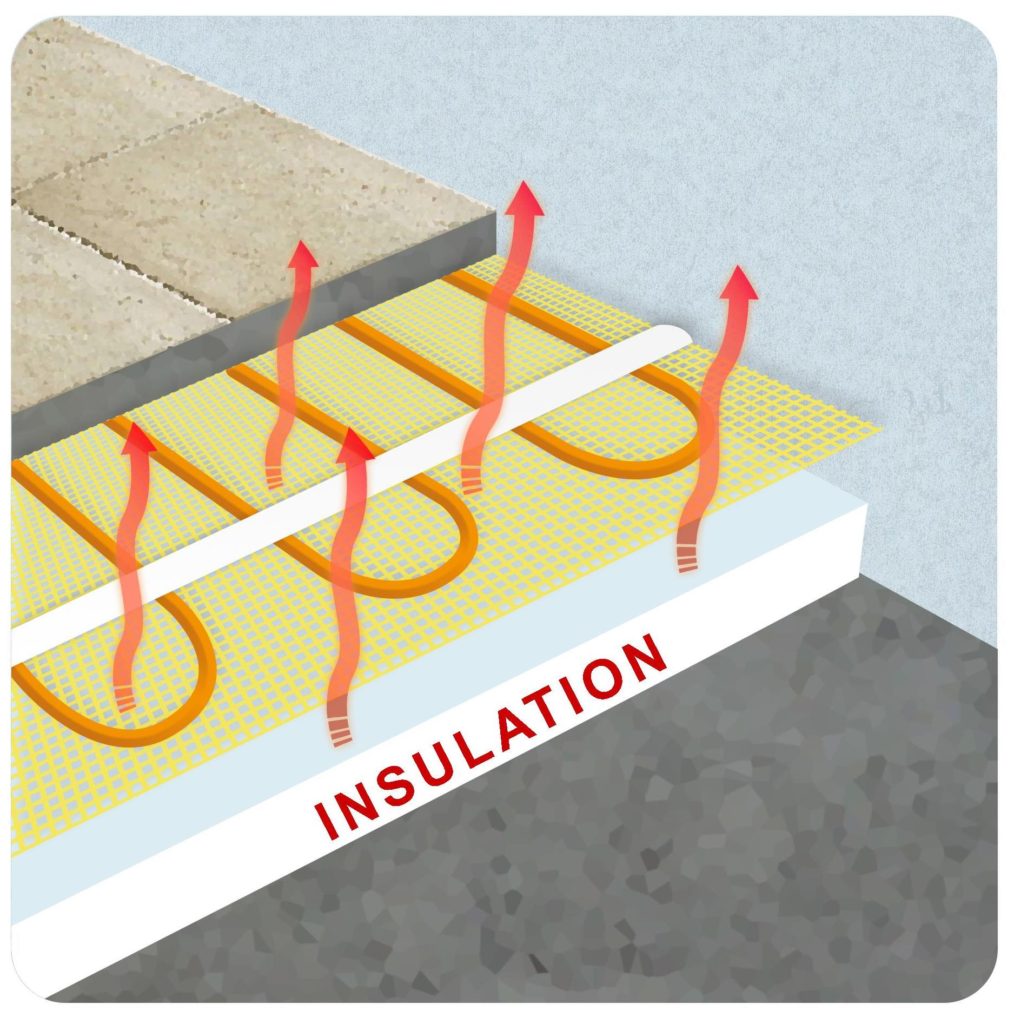
Correct floor insulation is of prime importance for the optimum operation of the heating system. It will ensure the maximum performance in comfort, energy saving and reactivity.
The floor insulation will force the heat flow upwards to the floor surface, avoiding heat losses downwards. On the other hand, the edge strip, polyethylene foam to be located on the base of the walls all around the room prevents cold bridging and any heat loss per heat conduction in between the heated floor and the walls.
This specific underfloor thermal insulation cannot substitute in any case the general thermal insulation of the building that reduces heat losses and energy consumption.
For new constructions, there are normally not restrictions on the available thickness to fit the floor thermal insulation. For an optimum performance, we recommend insulation with thermal resistance of 1 m2K/W. In the case the room is located directly over an outdoor space, a non-heated local or the house foundations, we recommend increasing the thermal resistance up to 2 m2K/W.
The floor insulation must be incompressible or with high density with a minimum density of 25kg/m3. 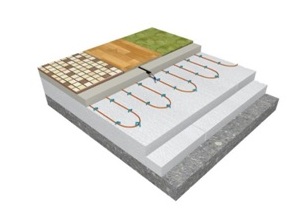
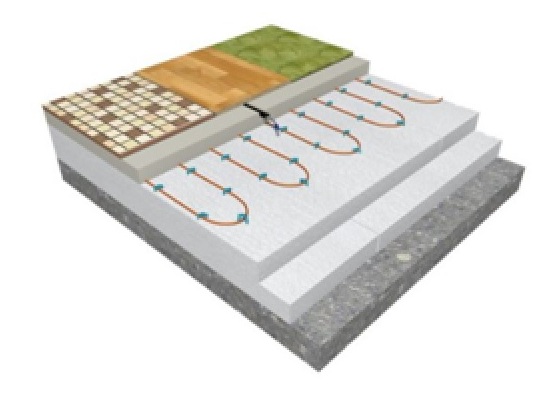
For instance, we recommend the use of extruded polystyrene (XPS) with 3 cm thickness to reach thermal resistance 1 m2K/W or 5 to 6 cm thickness to reach 2 m2K/W.
For renovation, an important parameter to consider is the available thickness to locate the underfloor heating system. In spite the room is limited in most of the case, it is mandatory to install thermal insulation. We recommend high performance thermal insulation for an optimum operation of the underfloor heating. Installation of F-Board insulation reduces down to one third the heating time. F-Board insulation with an extruded polystyrene core and a screed reinforced covering layer on both sides provides an excellent adhesion of bonding cements for the attachment of the individual layers. This will guarantee an easy and good quality installation.
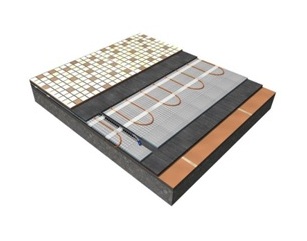 Other thin thermal insulation alternatives are available as for instance insulation boards composed of wood fibers embedded in resins.
Other thin thermal insulation alternatives are available as for instance insulation boards composed of wood fibers embedded in resins. 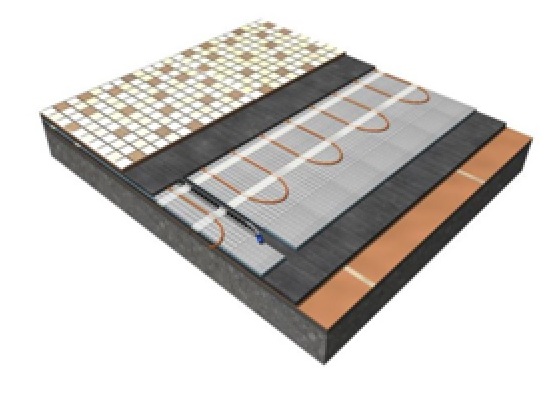
Thermal insulation installation:
For both new constructions and renovations, the subfloor should be in good conditions, flat and horizontal and free from any residues, dirt or rubble.
Insulation boards should not present deformation (deflection) greater than 4mm/m to avoid presence of air below the insulation.
Finally, installation should prevent penetration of bonding cements in between the insulation boards, or in between the insulation board and the walls by sealing the joints with adhesive tape or locating a decoupling waterproof layer (for instance 200 µm PE foil). For the same reason, it is recommended to cover the whole surface of the room with insulation board even if the heating mats only cover part of it.
Ceilhit, july 17, 2018


